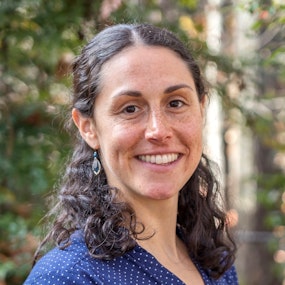JANSON SILVERS:
This is the award-winning Public Health Review Morning Edition for Friday, March 22, 2024. I am Janson Silvers. Now, today's news from the Association of State and Territorial Health Officials.
MARISSA ESSER:
During 2016 through 2017, there were an average of 138,000 deaths per year. And that went up by 29% to 178,000 deaths per year during 2020 to 2021.
SILVERS:
The CDC's Marissa Esser discusses a study her team recently worked on that outlines the steep rise in deaths from excessive alcohol use in recent years. Esser says while there are many factors that go into the increase, easier access to alcohol during the height of the COVID-19 pandemic could have played a role.
ESSER:
So, this type of environment then created an increase in ways of accessing alcohol. And that's in addition to other factors such as general delays in seeking medical attention and people were avoiding going to the emergency room. And so that could have contributed to increases in the deaths from excessive alcohol use.
SILVERS:
Esser says state health officials can educate the public about this being such a preventable cause of death and says policy can also help address the issue.
ESSER:
We can also talk with our states and communities about effective prevention strategies. Fortunately, there are a number of effective alcohol policy solutions that can help create healthier environments to support people in drinking less. And that includes things like reducing the availability of alcohol, regulating the number of places that are selling alcohol or making them more spread out.
SILVERS:
A link to the CDC's full study on deaths from excessive alcohol use is in the shownotes.
Funding continues to be the talk of the town up on the Hill, but what does it mean for public health? ASTHO's Carolyn Mullen tells us all about it in this week's view from Washington, D.C. report. Carolyn Mullen always great to have you on the newscast. How are you this morning?
CAROLYN MULLEN:
I'm wonderful.
SILVERS:
Terrific, I know that a lot has happened this week, especially even in the last few hours. Funding expires at midnight today. Can you tell me: what that funding is, why it's important to our members, and then where we're at with that?
MULLEN:
Sure. So, our long-awaited nightmare on fiscal year 2024 is hopefully coming to a close funding for HHS. So, that's NIH, CDC, SAMHSA, HRSA, expires at midnight tonight, along with programs such as DOD, and other important parts of the federal government. If Congress has not passed this appropriations bill, a partial government shutdown will ensue. We think the likelihood of a partial government shutdown over the weekend is possible. But it's just because Congress needs more time to vote on this legislation. Most likely, what will happen is one of the most famous things about March is spring break. And Congress wants to get on those airplanes and head home. So, we think that most likely the bill is going to get signed into law. Hopefully a partial government shutdown won't happen over the weekend. But that disruption should be minimal to public health programs.
SILVERS:
So, it sounds like it's good news that we have a bill that is moving forward. But what is actually in the legislation, is that good? Is that bad? What's actually in that text there?
MULLEN:
So, it really is a mixed bag of good news and bad news. On the bad news side, this legislation includes a rescission of four billion dollars. This is unobligated COVID-19 dollars that were leftover from the American Rescue Plan. The federal government wanted to be purposeful and planful with those dollars, but unfortunately, Congress said nope, we're going to take that money back. So, the impact to our members on the ground probably won't be felt, but it is a cut for public health, unfortunately. In the good news side, most of ASTHO's programs received level funding. So, public health infrastructure is funded at 350 million, DMI data modernization is 175 million, and other programs are pretty much level. We view that as a win because the House bill actually proposed really deep cuts to those programs. So, we're excited that Congress prioritized funding them at the current levels. In another bad news, our social determinants of health program at CDC received a two million dollar cut, which is really unfortunate and means we have our work cut out for us in fiscal year 2025. I do want to note to our listeners, if they're reviewing the legislation, it seems like SAMHSA and HERSA received deep top line cuts. I want to tell everybody not to worry about that, those cuts are actually to earmark funding and community projects. So, most core programs at SAMHSA and HERSA are actually level funded. Some received a little bit of a plus-up so we're not too worried about those agencies. And just didn't want our members to worry about them if they are going through the legislative text.
SILVERS:
So, that's what's in the textbook. What does it actually mean for fiscal year 25? Which does begin on October 1.
MULLEN:
So, we are in a presidential and congressional election year. And typically what happens is Congress will punt on any decisions during an election year. So, we should expect a continuing resolution beginning on October 1, keeping programs level through probably December until after the election. The really odd thing about this year is it was extremely challenging for Congress to get their act together, to actually put together a final package. If you recall, Speaker McCarthy lost his speakership, we had Speaker Johnson who came into a leadership position, we had continued resolution after continued resolution. And finally six months into the budget year, we get a final package, it doesn't bode well, for fiscal year 2025, just given that we're in a really uncertain time. And the overall amount of funding available for non defense discretionary programs only increases by 1%. So, we're not even keeping up with inflation next year. So, it's gonna be a pretty difficult time, especially during the election, but we're continuing our advocacy, we've had our Hill Day, my teams doing a series of meetings on the Hill, we're doing the best we can to put our best foot forward. And now we know based on this bill, where we need to focus our efforts, and it's really around that social determines of health and also hopefully getting some increases for public health infrastructure and data modernization in fiscal year 2025.
SILVERS:
Well, Carolyn Mullen, thank you and your team for doing all that work and combing through these bills. Whether they come in late or early is much appreciated, and I know everyone appreciates it.
Mullen's team works hard to keep you up to date on the latest from DC. To see the most current happenings including an update on this latest funding development. Make sure to sign up for ASTHO's legislative alerts. The link is in the show notes. Also today, partnerships have a number of benefits, including the development of the next generation of public health professionals. O'Keyla Cooper has more.
MULLEN:
Thanks so much.
O'KEYLA COOPER:
In a recent ASTHO podcast episode, the partnership between the Philadelphia Department of Public Health and Public Health AmeriCorps explored, emphasizing its pivotal role in cultivating future public health leaders. The discussion highlights PHA's dedication to addressing community health needs, promoting equity and providing career pathways in public health.
SILVERS:
To listen to the full episode, click the link in the show notes.
Finally, this morning, the latest public health news and resources are always changing. Stay on top of the most current items when you sign up for ASTHO's Public Health Weekly email newsletter, the link is in the show notes.
Before we go, a reminder also to follow this newscast on your podcast player so you don't miss a single report and connect with ASTHO on social media. We're on LinkedIn, Twitter, and Facebook.
That'll do it for today. We're back on Monday morning with more ASTHO news and information. I'm Janson Silvers. You're listening to the Public Health Review Morning Edition. Have a great weekend.






